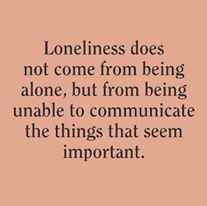Category: Spiritual Writings
Dive In
 ‘Find your own groove… dance your own dance.
‘Find your own groove… dance your own dance.
We came here to be unique expressions of the divine spark… not cookie cutter copies of what’s popular and socially appealing. We are being called to dive deeper into ourselves, to find our answers within.
You will only temporarily scratch an itch by looking outside of you, because others can only inspire. Sooner or later your soul will growl hungrily within you and the search begins again. You think, “Maybe this reading/modality will tell me who I am?”
You won’t find yourself out there. You need to go within. Face all the stuff that scares you. Look at all the things you’ve been told are true and ask are they true for you? Be willing to drop everything and empty it all out. Get to know yourself. Dive in..”
The Greatest Version Of Yourself
Choose Hope
The More You Are Thankful
Trust
6 Things Everyone Seems to Get Wrong About Depression
M ental health experts share the most misunderstood aspects of the disorder, from the way we treat those suffering from it to the way we talk about it.
ental health experts share the most misunderstood aspects of the disorder, from the way we treat those suffering from it to the way we talk about it.
Read more: http://www.oprah.com/health_wellness/surprising-depression-facts/all#ixzz5gf3oiKf8
Loneliness
The Goal Of Meditation
Pay Attention
 A young and successful executive was traveling down a neighborhood street, going a bit too fast in his new Jaguar. He was watching for kids darting out from between parked cars and slowed down when he thought he saw something. As his car passed, no children appeared. Instead, a brick smashed into the Jag’s side door!
A young and successful executive was traveling down a neighborhood street, going a bit too fast in his new Jaguar. He was watching for kids darting out from between parked cars and slowed down when he thought he saw something. As his car passed, no children appeared. Instead, a brick smashed into the Jag’s side door!
 He slammed on the brakes and spun the Jag back to the spot from where the brick had been thrown. He jumped out of the car, grabbed some kid and pushed him up against a parked car shouting, “What was that all about and who are you? Just what do you think you are doing?” Building up a head of steam, he went on. “That’s a new car and that brick you threw is going to cost a lot of money. Why did you do it?”
He slammed on the brakes and spun the Jag back to the spot from where the brick had been thrown. He jumped out of the car, grabbed some kid and pushed him up against a parked car shouting, “What was that all about and who are you? Just what do you think you are doing?” Building up a head of steam, he went on. “That’s a new car and that brick you threw is going to cost a lot of money. Why did you do it?”
“Please, mister, please. I’m sorry, but I didn’t know what else to do!” pleaded the youngster. “I threw the brick because no one else would stop.” Tears were dripping down the boy’s chin as he pointed around the parked car. “It’s my brother,” he said. “He rolled off the curb and fell out of his wheelchair and I can’t lift him up.” Sobbing, the boy asked the executive, “Would you please help me get him back into his wheelchair? He’s hurt and he’s too heavy for me.”
Moved beyond words, the driver tried to swallow the rapidly swelling lump in his throat. He lifted the young man back into the wheelchair and took out his handkerchief and wiped the scrapes and cuts, checking to see that everything was going to be okay. “Thank you and God bless you,” the grateful child said to him. The man then watched the little boy push his brother down the sidewalk toward their home.
 It was a long walk back for the man to his Jaguar…a long, slow walk. He never did repair the side door. He kept the dent to remind him not to go through life so fast that someone has to throw a brick at you to get your attention.”
It was a long walk back for the man to his Jaguar…a long, slow walk. He never did repair the side door. He kept the dent to remind him not to go through life so fast that someone has to throw a brick at you to get your attention.”
Author Unknown














